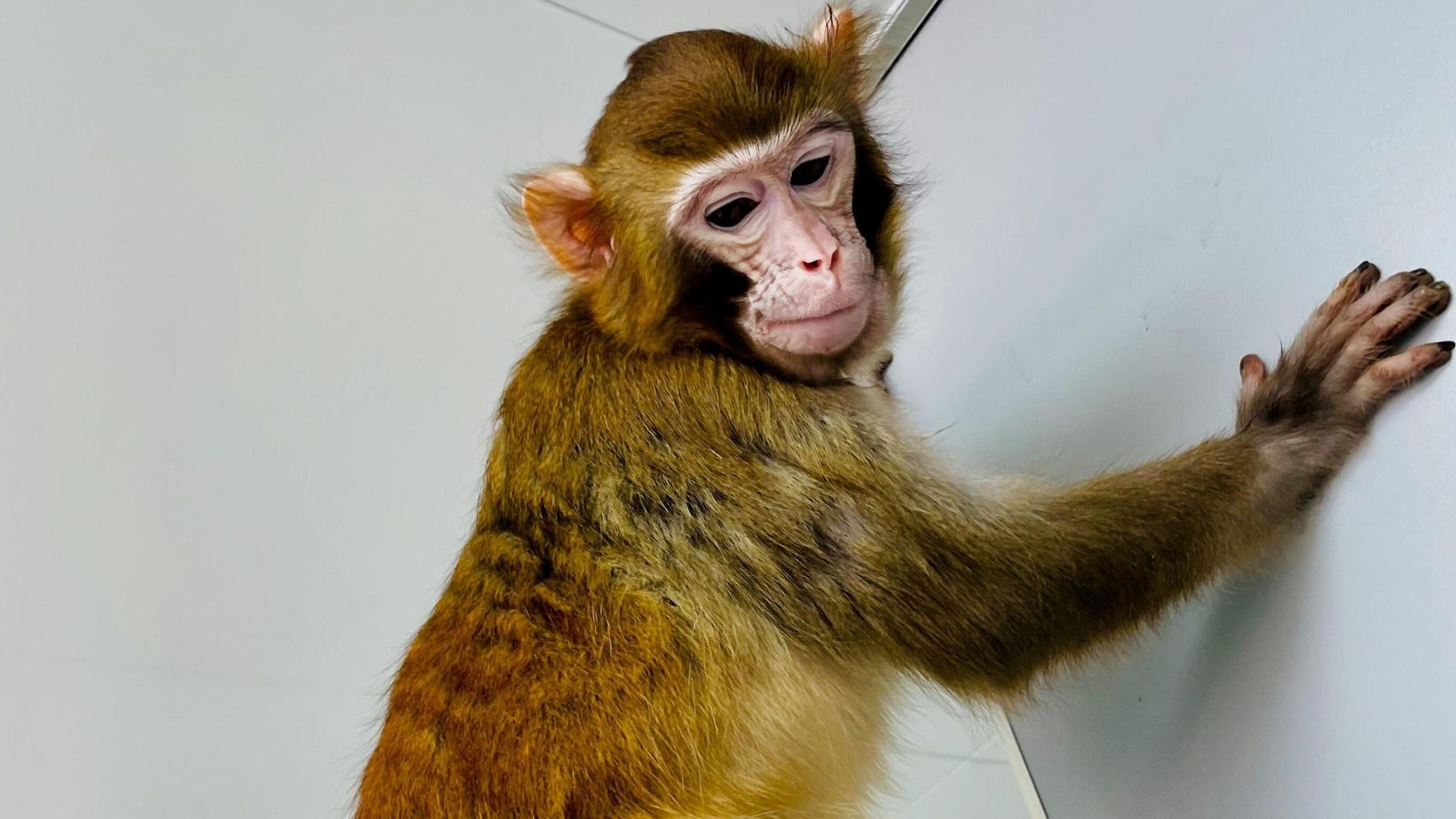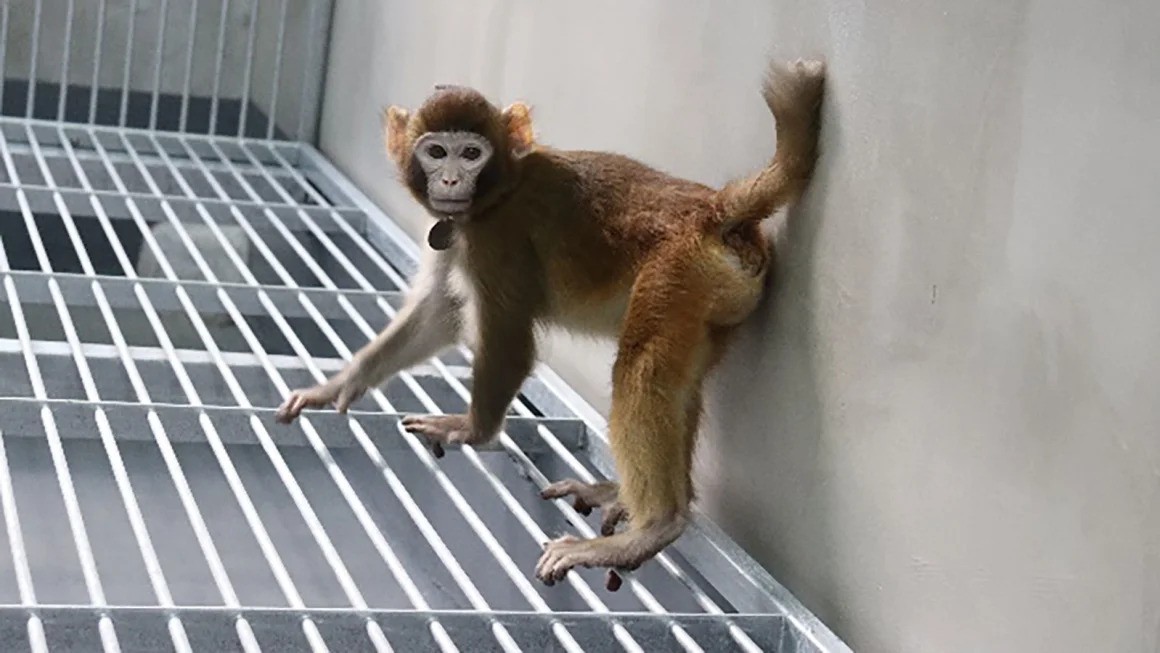Cloned Rhesus Monkey Highlights Limits Of Cloning
Cloned rhesus monkey highlights limits of cloning. Retro, a rhesus monkey clone born on July 16, 2020, is now over 3 years old, thriving, and showing robust growth, as reported by Falong Lu, one of the contributors to a study recently published in the journal Nature Communications.
Author:Hajra ShannonReviewer:Paula M. GrahamJan 18, 2024456 Shares41.4K Views

Cloned rhesus monkey highlights limits of cloning. Retro, a rhesus monkey clone born on July 16, 2020, is now over 3 years old, thriving, and showing robust growth, as reported by Falong Lu, one of the contributors to a study recently published in the journal Nature Communications. This research outlines the successful cloning process that led to Retro's existence.
Being the second species of primate to undergo cloning by scientists, Retro represents a significant accomplishment. The same research team had previously announced in 2018 the successful cloning of two identical cynomolgus monkeys, a type of macaque, which are still alive today.
"We have achieved the first live and healthy cloned rhesus monkey, which is a big step forward that has turned impossible to possible, although the efficiency is very low compared to normal fertilized embryos," said Lu, an investigator at the State Key Laboratory of Molecular Developmental Biology and Institute of Genetics and Developmental Biology at the Chinese Academy of Sciences. "Currently, we haven’t had the second live birth yet."
In 1996, the groundbreaking creation of Dolly the sheep marked the first successful cloning of a mammal. This was done using a method called somatic cell nuclear transfer (SCNT), in which scientists recreate an unfertilized egg by joining a somatic cell nucleus that is not from a sperm or egg with an egg that has had its nucleus taken out.
Since Dolly, scientists have ventured into cloning various mammalian species, including pigs, cows, horses, and dogs. However, the cloning process has been characterized by its unpredictability, with typically only a small percentage of embryos transferred into surrogates resulting in viable offspring.
"In a way we have made much progress in that, after Dolly, many mammalian species were cloned, but the truth is that inefficiency remains a major roadblock," said Miguel Esteban, principal investigator with the Guangzhou Institute of Biomedicine and Health at the Chinese Academy of Sciences. He was not involved in the latest research but has collaborated with some members of the research team on other primary studies.
Cloning A Rhesus Monkey
The Chinese research team, which was based in Shanghai and Beijing, used a modified form of somatic cell nuclear transfer (SCNT) to work with cynomolgus monkeys (Macaca fascicularis) and improved the method for cloning rhesus monkeys (Macaca mulatta).
Through numerous unsuccessful cloning attempts, the team observed a deficiency in the development of the outer membrane responsible for placenta formation in early cloned embryos. To overcome this challenge, they implemented a process known as inner cell mass transplantation. Esteban explained that this involved inserting cloned inner cells into a non-cloned embryo, allowing the cloned entity to develop normally.
The newly devised technique was tested using 113 reconstructed embryos, of which 11 were transferred to seven surrogates. However, the outcome was a single live birth, as reported in the study.
“„We think that there might be additional…. abnormalities to be fixed. Strategies to further enhance the success rate of SCNT in primates remains …our main focus in the future.- Falong Lu
Zhong Zhong and Hua Hua, the initial pair of cloned monkeys, have now surpassed 6 years of age and lead contented and healthy lives among their counterparts. According to Lu, the researchers have not yet identified any potential limitations on the lifespan of these cloned monkeys.
While Zhong Zhong and Hua Hua are commonly acknowledged as the first cloned monkeys, it's worth noting that a rhesus monkey was successfully cloned in 1999 using a technique considered simpler by researchers. In this case, scientists employed a method akin to the natural development of identical twins, where embryos were split, as opposed to using an adult cell as in the SCNT technique.
The Implications Of Cloning Monkeys
The researchers highlighted the potential acceleration of biomedical research through the successful cloning of monkeys, addressing limitations encountered in studies reliant on lab mice. The importance of nonhuman primates in scientific research, given their closer biological proximity to humans, has been underscored by the National Academies of Sciences, Engineering, and Medicine in a reportreleased in May. This research has played a pivotal role in crucial medical advancements, including the development of Covid-19 vaccines.
However, the use of monkeys in scientific research remains a contentious issue due to ethical concerns regarding animal welfare. The research team emphasized their adherence to Chinese laws and guidelines governing the ethical use of nonhuman primates in scientific research.
The UK’s Royal Society for Prevention of Cruelty to Animals said it has "serious ethical and welfare concerns around the application of cloning technology to animals. Cloning animals requires procedures that can cause pain and distress, and there can be high failure and mortality rates."
The ability to generate genetically identical monkeys could prove valuable, Esteban noted.
“„This research is proof of principle that cloning can be done in different non-human primate species and opens the door to new ways of enhancing the efficiency. Cloned monkeys can be genetically engineered in complex ways that wild-type monkeys cannot; this has many implications for disease modeling. There is also a species conservation perspective.- Miguel Esteban
Dr. Lluís Montoliu, a research scientist at the National Center for Biotechnology (CNB-CSIC) in Spain, not affiliated with the study, pointed out that cloning both species of monkeys showcased two significant achievements.
“First, it is possible to clone primates. And second, no less important, it is extremely difficult to succeed with these experiments, with such low efficiencies,” he said in a statement.
He further emphasized that the low success rate of the process indicated that not only was human cloning deemed unnecessary and open to debate, but any attempt at it would be exceptionally challenging and ethically unjustifiable.
"Reproductive cloning a human being is completely unacceptable," Lu said.

Hajra Shannon
Author

Paula M. Graham
Reviewer
Latest Articles
Popular Articles
